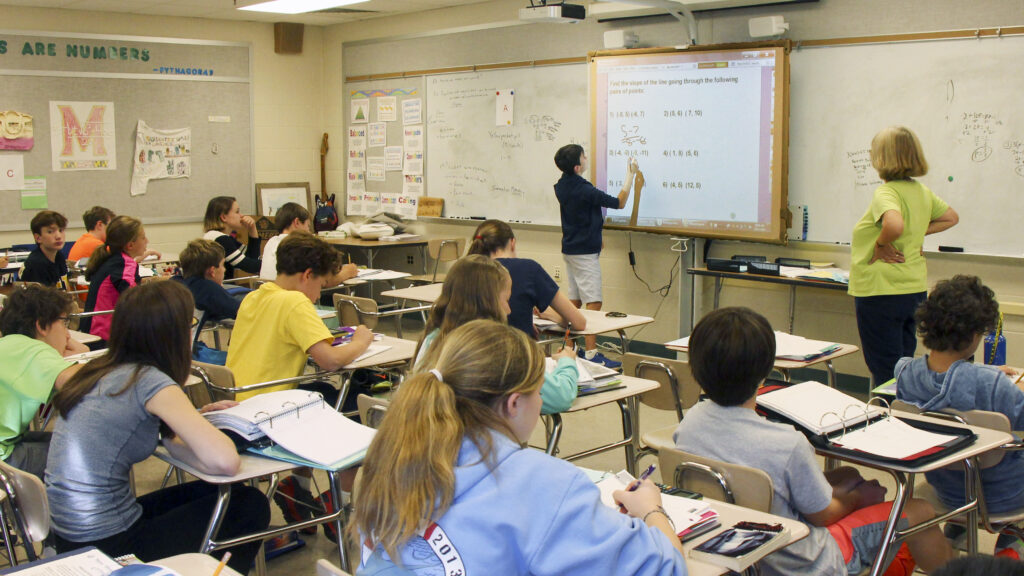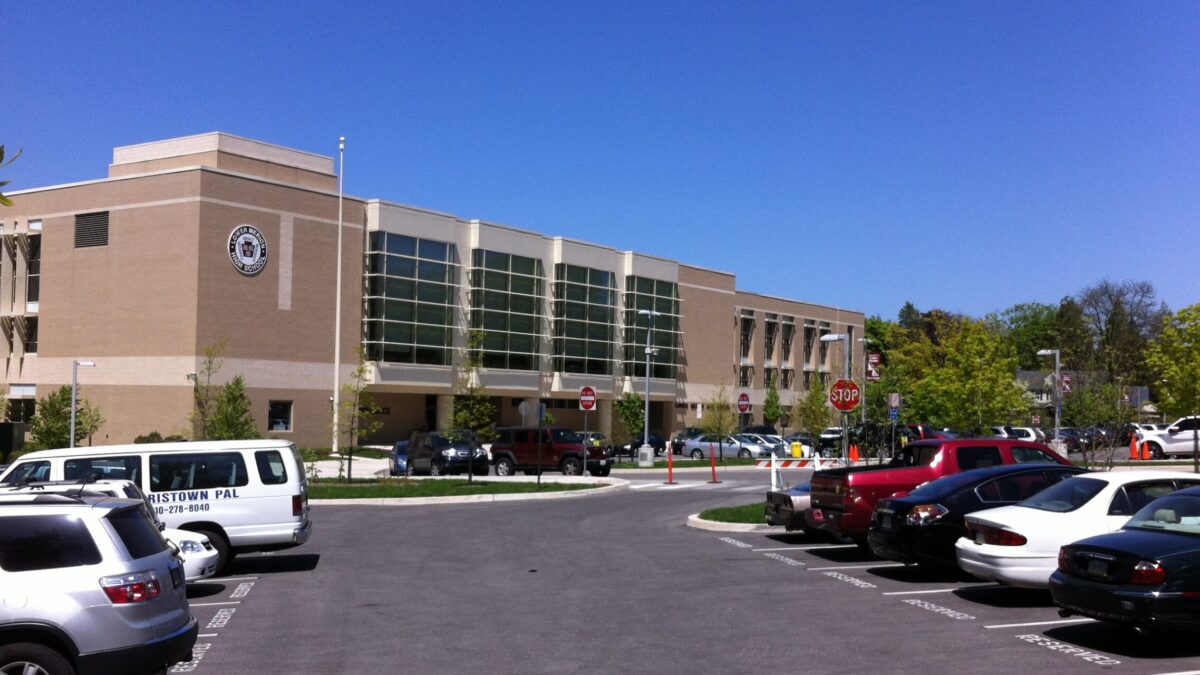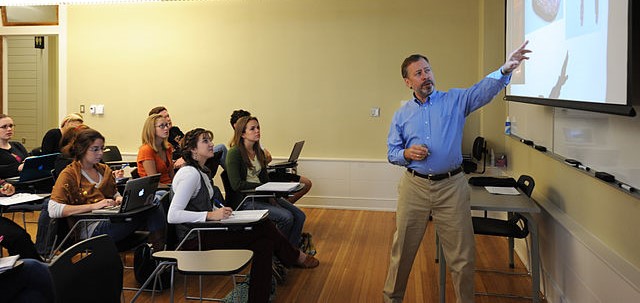Beth Ann Rosica: Shapiro boasts of education improvements while most students are not proficient in math
The state of Pennsylvania spent $16.8 billion last year to fund public education, and the return on investment is abysmal. In 2024, 53 percent of students were proficient in reading and writing, while only 40 percent were proficient in math.
Last year, we conducted an in-depth analysis of fourteen school districts in Southeastern Pennsylvania and came to the conclusion that it will take more than money to solve our education crisis in the Commonwealth.
This year’s analysis yields strikingly similar conclusions after researching the same fourteen districts, comparing 2024 test scores in reading and math against starting teacher salaries.
Public school students in grades three through eight take the Pennsylvania System of Student Assessment (PSSA) every year which includes English Language Arts (ELA) and Math.
The graph below compares the districts’ test scores with their starting salary for teachers and shows that salaries appear to have little to no impact on proficiency rates. Starting salaries range from $50,000 to $60,000 but test scores reveal no significant differences. ELA proficiency ranges from seventeen percent to 85 percent, and Math proficiency ranges from six percent to 79 percent.

The starting teacher salaries were compiled by the Pennsylvania State Education Association (PSEA), the state teachers’ union. According to PSEA, these starting salaries are based on the district’s most readily available information and in many cases are for the upcoming school year. So even though they don’t completely align with the year of the PSSA scores, they are fairly close and likely good enough for comparison purposes.
PSEA is using this data to advocate for a starting teacher salary of $60,000 annually.
“Increasing minimum educator salaries to $60,000 is a top priority for PSEA. We’re pushing this issue both in the state legislature and at the bargaining table in contract negotiations, because we believe that every educator, no matter what public school they work in, should be paid fairly and respected for the incredible work they do.”
While I fully support compensating teachers fairly, I believe PSEA is approaching this incorrectly. First, the chart above demonstrates that teacher compensation does not appear to be related to academic performance. Second, Pennsylvania is a large, diverse state, composed of urban, rural, and suburban areas. The cost of living in Southeastern Pennsylvania is vastly different from the rural areas of the state. A blanket starting salary assumption makes no sense.
PSEA is not alone in its position that throwing money at public education will fix the problem. In his budget address last week, Governor Shapiro boasted about the unprecedented funds that he funneled to public schools last year.
Despite the staggering test scores, which he failed to mention, Shapiro spent 90 minutes in his budget address explaining how “Pennsylvania is on the rise.”
“We invested $11 billion in public education for the first time ever and targeted those dollars to the schools that need them most.”
“We’re starting to meet the needs of our students, including serving nearly 92 million free breakfasts to school kids last year.”
“Pennsylvania is on the rise.”
With the fever pitch of a minister at Sunday church, Shapiro regaled the legislature with his accomplishments in public education. He spoke about new band uniforms and instruments in Allentown School District. He touted the expanded mental health services and improved HVAC systems in schools across the state. He applauded the increase in vocational technical education and stipends for student teachers.
Notably absent from his address was any mention of academic achievement and outcomes for Pennsylvania public school students. There were no talking points about how the increased funding will have any bearing on reading and math skills for those students who are not proficient.
While some of these initiatives are laudable and important, the most imperative job of public education is to teach reading, writing, and math skills, in addition to critical thinking. Yet the only mention of basic skills was later in the speech when referencing adult education.
“Today there are 650,000 Pennsylvania adults who don’t even have a high school degree….
Folks who want to advance their careers — but need help developing the reading, writing, and math skills most jobs require. That’s where adult literacy initiatives come in.”
We will continue to have an adult literacy crisis in the state if we do not address the basics in K-12 schools.
Shapiro is calling for an additional $526 million for education through the “adequacy formula,” but he did not cite any expected outcomes or metrics to measure whether the increased funding is achieving the desired outcome.
Based on the 2024 PSSA scores, the increased funding did not have much of a positive impact on student achievement last year as proficiency rates were either flat or actually decreased from 2023. And while I don’t necessarily believe that PSSA’s are the best measure of student outcomes, they are the only metric we have right now.
I fully recognize that it may take some time to realize gains based on this increased funding, but the Pennsylvania Department of Education and subsequently school districts received massive amounts of Covid-relief funds in 2020 and 2021. The first allocation to the Commonwealth was $523.8 million and the second was an unparalleled $2.2 billion. Clearly these funds did next to nothing to support proficiency.
Additionally, the Governor has not set any short term goals to assess the success or failure of the increased funding. The Pennsylvania Department of Education has a long-term goal to reduce the number of students who are not proficient in reading, math, and science, but the targets are seven years away.
“Pennsylvania aims to reduce, by half, the statewide percentage of non-proficient students on state assessments by the end of the 2032-33 school year.”
That’s a long way off, and Shapiro will not likely be the Governor in 2032. And even if that goal is achieved, there are still a large number of students below the proficient level.
Yet Shapiro’s view on increased funding is in lockstep with the PSEA, who donated heavily to his campaign. In 2022, PSEA’s top recipient of funds was Shapiro at $775,000 and that does not include donations that can’t easily be traced through Democratic PACs.
Another missing talking point from Shapiro’s address was school choice and Lifeline Scholarships which help children in failing schools move to a private school with better academic outcomes. Shapiro campaigned on supporting this initiative and even pretended to support it during his first year in office, but it appears he has abandoned the concept based on this year’s address.
He must be worried about his run for President in 2028 as he will lose support from the Democratic party that is owned by the teachers’ unions if he pledges allegiance to any type of school choice option.
Despite what our governor and the Democratic party says, money is not the answer to fixing our education system. Education disparities across school districts are not related wholly to funding, and that is why we need to dig deeper and find real solutions to address huge gaps in academic achievement.
Over the next few weeks, we will take a deep dive into academic achievement, funding, and what is working and not working. I am fairly confident that more money is not the solution, and we can still find solutions to help the vast majority of students achieve proficiency in basic skills long before 2033.
Beth Ann Rosica resides in West Chester, has a Ph.D. in Education, and has dedicated her career to advocating on behalf of at-risk children and families. She covers education issues for Broad + Liberty. Contact her at barosica@broadandliberty.com.





Just throwing money at the problem won’t fix the education system. Deeper issues need to be addressed to help students succeed, and solutions should be found before 2033.
Are there any studies, or simple surveys, regarding what teachers say are their biggest challenges? Anecdotally, many less wealthy school districts’ teachers spend their own money to provide materials for their students. What are the most pressing problems and how can they be fixed most effectively? High student-to-teacher ratios can make it difficult to manage classrooms effectively, so one answer could be have more capable adults (not trained teachers) in the room to assist the trained teachers. Many students come from challenging backgrounds, including poverty, family instability, and exposure to violence. A novel answer is having more men (not teachers, and not women but specifically men) in the room. Align their compensation with results of the students. The more children that achieve their scholastic goals, the more money those men would earn. I guarantee that classroom results would skyrocket. It would not be a popular idea… but it would work, fast. I’m sure there are plenty of veterans or retired tradesmen that would like a little pocket money and would be excellent adults to assist the teachers.
Not one more cent in teacher compensation until teacher training gets a serious reconsideration:
are teachers taught the basics – how to teach reading and math, how to maintain classroom discipline? How long does that take? Surely not four years.
Prospective teachers should spend a year or more in actual classrooms , learning the good and bad of teaching from actual teachers. Does all that really require four years?
Higher level teachers need different training. Talented science, music, and math teachers teach at private schools because they have not taken the mindless teacher training courses to be certified as public school teachers. That needs to change.
More hands on training; more content capability; no more Mickey Mouse courses that schools of education are invested in. We can have better trained teachers if we overhaul the way they’re taught and certified.
It took sixty years to get us to this dilapidated point in our public education system, a system that at one time was the greatest democratizing force in history. New Yorkers boasted that New York City had the best water and the best public education. That was when the AFT and Albert Shanker were more concerned with policy than they were with salaries. It will probably take us sixty years to return to the pre-student-centered days when thanks to Sputnik and Laika we had a mobilization of our education system comparable to our World War II mobilization. When we tuned in on our shortwave sets to the beep, beep, beep, we knew we had fallen behind. How far behind are we now? Where do we rank now on the world stage? Last?
Here’s what we need to do.
Our universities need to have teacher education programs that focus on content. Teachers should graduate with BAs and BSs and then get certified to teach their content area. This will cull the ignoramuses and ethnocentrics from the teaching profession. Make teacher education rigorous. How do we expect kids to follow the example of a teacher who doesn’t read, write, do homework, or think.
Deconstruct the Hospital and Business Models. First, schools should view students as learners not as patients. A 504 was not created to give kids an excuse not to do homework so that they could attend dance class or travel soccer practice. And the idea that the customer, that is, parents are always right, doesn’t fit in education. Parents are not always right, kids lie; not every kid is going to Penn; and a C means average.
Once our teachers become respected scholars again (This will take at least 20 years.), then we can return to the teacher-centered classroom where the teacher is the depository of knowledge and wisdom. It will be the teacher once again (See Our Miss Brooks, Miss Dove, Mr. Chips, and Miss Jean Brodie ) who generates knowledge and wisdom not the student and not the internet.
I have given you the compass direction of due north. I have not described the topography we must traverse. It is formidable. How do we get rid of the fruitcake administrators and nescient teachers? We could pay them to get out like Musk is doing to the federal employees. I’m sure we would hear from our RINOs who would object to paying educators for nothing. My response would be, “Well, isn’t that what we’ve been doing?”
More than one source says: First grade, second grade, and third grade children learn to read. Starting in fourth grade children read to learn. Another reality: public school curriculum is set at a pace for the lowest quarter of the population. Finally: according to the US Census the number of children living with two parents has dropped since 1968, while the percentage living with their mother only has doubled. In 2020, Asian children were the most likely to live with two married parents. If you had a factory and your material was the main issue, nothing is going to get better until you address your main problem. The main problem is the children are coming from broken families, and they don’t know how to read. The only way to address that is increase the adult to child ratio and align the adult’s incentives with direct results of the children. It is ridiculously simple, but too harsh for most people to accept the reality. One definition of insanity is to keep doing the same thing and expect different results. The structure of the classroom needs to change to achieve change. And the structure of the classroom needs to change to deal with the reality of the students that are entering the classrooms.